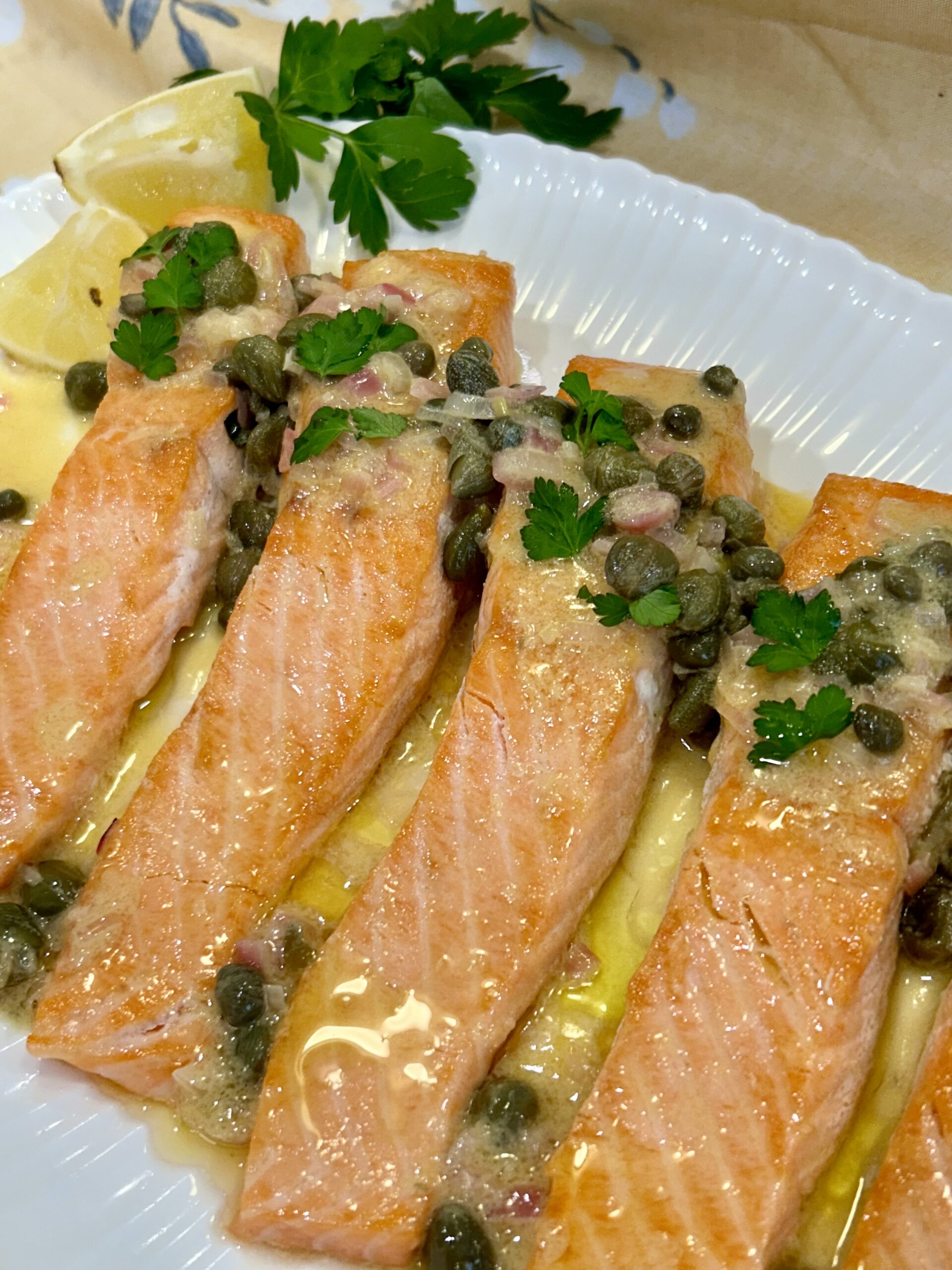- 4 6-ounce skinless salmon filets, center cut
- 1 ½ teaspoons sea salt, divided
- 3 tablespoons olive oil, divided
- 2 tablespoons chopped shallots
- 1/3 cup unsalted chicken broth
- 2 tablespoons capers, drained
- 1 teaspoon lemon zest
- 2 tablespoons fresh squeezed lemon juice
- 3 tablespoons unsalted butter
- 1 tablespoon Dijon mustard
- 2 tablespoons chopped flat leaf parsley
Dry the salmon filets with a paper towel. Evenly season the filets with 1 teaspoon salt. Heat a large nonstick skillet over medium-high heat.
Add 2 tablespoons of olive oil to the hot skillet. Carefully add the filets to the pan flesh-side down. Allow to cook without moving or turning for 4-5 minutes. This will create a deep brown color on this first side. Using a flexible spatula, flip each filet over to cook on the second side. Cook this side for 2-3 minutes. The filets should be slightly pink at the center. Remove the filet to a plate to rest.
Working quickly, add the remaining 1 tablespoon of olive oil to the pan. Add in the chopped shallots and the remaining ½ teaspoon of salt. Stir to combine cooking for about 1 minute. Add in the chicken broth, lemon juice, capers, and lemon zest. Simmer for 2 minutes to slightly reduce the mixture. Whisk in the butter and mustard until smooth. Turn off the heat, removing the pan from the heat surface. Spoon the sauce over the salmon, sprinkle with the chopped parsley.
View upcoming classes here.
Recipe: Joyce Conway
Photo: Cindy Ramsey
Salmon Piccata is a dinner that seems very elegant that you might order from a restaurant. However, it is a quick cooking meal that you can serve at home in under 30 minutes. Be sure to have all your measuring and chopping of the ingredients completed before you start cooking. Once you start cooking, everything moves along very quickly. Piccata is more commonly made with chicken or veal, but always with a buttery pan sauce spiked with lemons and capers. Serve the Piccata with thin Capellini or Vermicelli pasta.
Piccata was once thought to have been created for Italian nobility during the Renaissance. Further research leads to Piccata being a dish made by Italian immigrants first noted in the 1930’s. When you make it at home, you and your family may feel as if you are dining like royalty!

